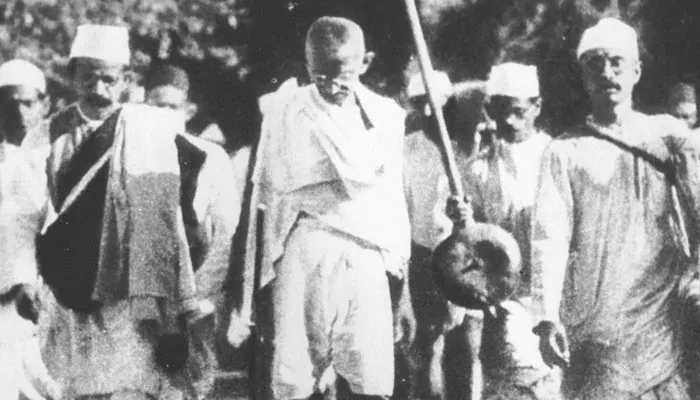
History remembers Gandhi's fast, not their last breath: The Martyrs of Chauri Chaura deserve more.
It was a winter morning in Chauri Chaura, a quiet town in Gorakhpur district. On 4 February 1922, nearly 2,000 villagers—farmers, students, and labourers—marched to protest the local liquor shop and rising colonial taxes. Inspired by Gandhi's Non-Cooperation Movement, they believed in peaceful resistance.
But British police saw them differently. As the marchers reached the station, they were lathi-charged. Tempers flared. When police fired into the crowd, three protesters fell. The dream of non-violence collapsed in a cloud of dust and gunpowder.
What followed was fury. The crowd chased the officers to the Chauri Chaura police station. Inside were 23 police officers, including Inspector Gupteshwar Singh and Sub-Inspector Prithvi Pal. The station was set on fire. The wooden roof caught first. Flames climbed fast. Twenty-two policemen died on the spot. One died later in the hospital.
It wasn't a planned attack. It was rage, grief, and the breakdown of control. And it would change everything.
News of the violence shattered Mahatma Gandhi. He believed India wasn't yet ready for non-violent mass action. For him, the loss wasn't just of lives but moral clarity.
Gandhi went on a five-day fast and made the hardest decision of his political life. On 12 February 1922, he suspended the entire Non-Cooperation Movement. It stunned the nation. Momentum had been building, but Gandhi stood firm. "Discipline before freedom," he insisted.

The British acted with a vengeance. Martial law was declared. Over 225 people were arrested. Six died in custody. Trials began swiftly.
Among the hanged were Nazar Ali, Bhagwan Ahir, Lal Mohammad, Meghu Tiwari, Kali Charan, Sahdev, and others. They were ordinary names and men, and their stories are lost in the shadows of history.
Most of these men came from Dumri Khurd, a small village of Dalits and Muslims. They weren't revolutionaries in the usual sense. They were farmers and workers—drawn into the movement by hope and hunger.
Their anger wasn't against law and order, it was against decades of neglect, poverty, and humiliation. Their protest became a firestorm, and their punishment was the noose.
Today, Chauri Chaura has two memorials. One stands for the 22 police officers. The other, built in 1982, lists the 19 hanged men. A minaret, shaped like a rising flame, also honours their memory.
But the families still struggle. Ram Narayan Tripathi, grandson of Meghu Tiwari, says they lost their land and dignity—and even after freedom, they remained invisible. It wasn't until 1993 that families began receiving a small martyr's pension. Even now, recognition feels hollow.
The Chauri Chaura incident became a turning point. Gandhi's decision divided opinion. Leaders like Jawaharlal Nehru and Subhas Chandra Bose believed it set the movement back by years. But others saw it as necessary—to preserve the soul of non-violence.
It also sparked a new wave of thinking. Young revolutionaries like Chandrashekhar Azad and Bhagat Singh would soon reject slow politics. The fire of Chauri Chaura lit the path to more radical resistance.
In 2022, the nation marked 100 years of Chauri Chaura. Politicians came, and speeches were made, but in Dumri Khurd, not much had changed.
There, memories live not in books but in broken homes. The men who died for a flag they barely understood are still waiting to be remembered—not just by name, but by truth. The fire has gone. But its smoke still hangs in the history of India's freedom.